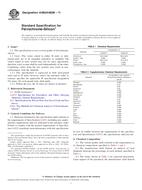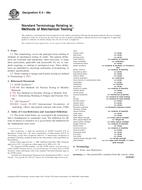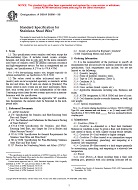1.1 This test method covers the determination of the in-situ state of stress in rock by hydraulic fracturing.
Note 1 – Hydraulic fracturing for stress determination is also referred to as hydrofracturing, and sometimes as minifracing. Hydraulic fracturing and hydrofracturing may also refer to fracturing of the rock by fluid pressure for the purpose of altering rock properties, such as permeability and porosity.
1.2 Hydraulic fracturing is the widely accepted field method available for in situ stress measurements at depths greater than 50 m. It can be used in drill holes of any diameter.
1.3 Hydraulic fracturing can also be used in short holes for which other stress measuring methods, such as overcoring, are also available. The advantage of hydraulic fracturing is that it yields stresses averaged over a few square metres (the size of the induced hydraulic fracture) rather than over grain size areas, as in the case of overcoring techniques.
1.4 All observed and calculated values shall conform to the guidelines for significant digits and rounding established in Practice D 6026.
1.4.1 The method used to specifiy how data are collected, calculated, or recorded in this standard is not directly related to the accuracy to which the data can be applied in design or other uses, or both. How one applies the results obtained using this standard is beyond its scope.
1.5 The values stated in SI units are to be regarded as standard. No other units of measurement are included in this standard.
1.6 This standard does not purport to address all of the safety problems, if any, associated with its use. It is the responsibility of the user of this standard to establish appropriate safety and health practices and determine the applicability of regulatory limitations prior to use.
Product Details
- Published:
- 07/01/2008
- Number of Pages:
- 7
- File Size:
- 1 file , 140 KB
- Redline File Size:
- 2 files , 290 KB


